Have you ever faced the error code of the P0420 check engine light? Potential it was a source of concern and stress. As a seasoned vehicle specialist with lifelong experience under various car hoods, I have to tell you the p0420 I something beyond a typical check engine light.
It’s specifically pinpointing a fault in the catalytic converter. It indicates the catalytic converter’s usability in reducing exhaust emissions.
In case of facing this error code, you should consider making an immediate intervention. Ignoring the p0420 code leads to many problems including environmental footprint, reduced fuel efficiency, and performance drop. It also makes you go for costlier repairs in the long run. So it’s necessary to seek professional help for this issue.
If you’re willing to find out more about this error code and its ways of resolving it, you’re standing at the right point. I’m going to share my gathered knowledge through this year with you. Stay tuned for this to figure out what the error p0420 is and how can you resolve it.
You might also enjoy: Why Did My Traction Control And Check Engine Light Come On?
Unraveling the Mystery Behind the P0420 Code: A Professional’s Insight
I encountered this error code as much as I can’t count. So what does the P0420 code say? This error code is your catalytic converter talking to you and asking for your attention. It sends a signal to the vehicle’s onboard diagnostic system to inform you about the catalytic converter’s inefficiency.
Let me tell you the role of catalytic converter. Imagine your vehicle as a creature that breathes and mixes oxygen with fuel to provide you with power. This is called a combustion system that is not faultless. As a result of this combustion, there would be harmful gases in the exhaust.
At this time the catalytic converter enters the game and converts these harmful gases to less toxic ones before they leave the exhaust. And if it doesn’t do the job of conversion as perfectly as it should, error p0420 arises to tell you there’s something wrong here.
What happens as a result of a faulty catalytic converter? Regardless of environmental footprint, it puts you in many troubles. You experience poor fuel efficiency, reduced power, and emission test failure.
Unfortunately, most drivers ignore this code and attempt to turn it off with an OBD2 scanner. However, this is not wise to remove illness symptoms without curing them.
You should look for the main cause and resolve it whether it’s the matter of a malfunctioning catalytic converter, oxygen sensors, or vacuum leak.
Stay tuned for the next section to read about the underlying causes of the error p0420 and its solutions. Knowing them, you can not only have an environmentally friendly vehicle but also enjoy your vehicle’s optimal performance.
Navigating Through the Fog: A Personal Guide to Diagnosing the P0420 Code
As a result of visiting real-life cases, I realized that you should always make sure about the cause and then proceed to repair approaches.
Because repairing with insufficient information or misunderstandings leads to excessive damages or unnecessary costs. Stay with me to learn how to diagnose the cause.
First of all, use an OBD2 scanner to figure out which part of your vehicle is malfunctioning. Once you connect it to the vehicle, it shows you the inefficient function of the catalytic converter. At this point, your main job starts.
Don’t forget the visual inspection. Look for any signs of wear or damage in the exhaust system. Loose components and holes are good reasons to trigger the error p0420.
Then go to check the oxygen sensors. They’re designed back and forth of the catalytic converter to measure gases. In case of proper functionality, the post-converter sensor should show less oxygen fluctuation. Otherwise, the catalytic converter isn’t working as properly as it should.
After visual inspection, you should be attentive to the sintered system. Sometimes it’s helpful to restrict the computer module system to fix the problem as an outdated system interprets the sensor signals incorrectly.
The next step involves looking for leaks and checking the fuel system’s pressure and the oxygen capacity of the catalytic converter. This is a bit tricky task to tackle.
In brief, you should understand the reason for error p0420 to be able to deal with it. Tackling this issue is seemingly complicated but you can handle it with a methodical approach. It saves your time and money and a peaceful mind. But remember to ensure the problem and then go for the repair process.
You might also enjoy: What to Do When The BMW Check Engine Light Comes On?
Turning the Tide: My Approach to Fixing the P0420 Code
In several years of experience in the automotive industry, I’ve always struggled to find a straightforward and one-size-fits-all solution for the P0420 error. However, I couldn’t as the repair approach varies based on the underlying issue. But don’t worry because I gathered all my visual hands-on experience here to spot a light on this error code.
1. Inspect and Replace Oxygen Sensors
The first potential cause of a triggered P0420 error is a failing oxygen sensor. If it can’t measure the air in the exhaust accurately, the error flickers. So sometimes you can resolve the issue by replacing faulty oxygen sensors with no need to replace the catalytic converter itself. Oxygen sensor replacement is a straightforward and cost-effective process.
2. Check for Exhaust Leaks and Repair
Exhaust leaks disturb the catalytic converter’s reading and trigger the error light. Restore the catalytic converter’s efficiency by repairing the leak. Also always be attentive to the exhaust system to address the issues of wear, crack, or leak promptly.
3. Update the Vehicle’s Software
An outdated software system reads the data of the catalytic converter incorrectly and this leads to error code illumination. Always check for software updates to prevent this issue.
4. Catalytic Converter Replacement
In case of proper function of the oxygen sensor and no exhaust leaks, it’s time to inspect the catalytic converter’s efficiency. If it has problems, we should replace it. It’s a cistk6 repair but there’s no other way left for us.
5. Cleaning the Catalytic Converter
Consider cleaning the catalytic converter before replacing it. Do it with a specific catalytic converter cleaner and fuel. It removes buildup debris and may resolve your issue. It’s worth trying this simple solution before going for a costly replacement.
6. Inspecting and Repairing Related Systems
Also, check the functionality of systems that affect the catalytic converter. Inspect the fuel injection system, and ignition system and ensure there are no misfires. The malfunctioning of each part can affect the catalytic converter’s efficiency.
According to these factors, resolving the p0420 error requires a bit of detective work as you should first figure out which part is causing the problem. Avoid heading to catalytic converter replacement without these considerations as it may just put you through unnecessary expenses. You should be patient during this tricky process.
You might also enjoy: Why Is The Check Engine Light Flashing When Accelerating?
Charting a Course for Clear Skies: Preventing Future P0420 Codes
You might figured out that the p0420 code is trying to keep our vehicle’s balance with the environment. In my perspective, you should maintain your vehicle in a way that doesn’t face this error code. Because it’s a wiser option to prevent rather than to fix the issues. Let’s delve into some preventive strategies together.
Routine Check-ups: Prioritize your regular check-up schedule. These check-ups include oil changes, inspecting the ignition system, and ensuring the emission control system’s proper functionality. Doing this, you prevent contaminations that lead to catalytic converter failure.
Fuel Quality Matters: Consider using proper and high-quality fuel and it burns properly and won’t cause issues for the catalytic converter or the injection system.
Keep an Ear to the Ground: Be attentive to your vehicle’s behavior changes and take each change seriously. Consider addressing each unusual performance such as rough idling or misfires before they escalate to severe and more complicated issues for the catalytic converter.
Embrace Early Diagnostics: Don’t wait to check engine light illumination. Consider regularly checking the whole vehicle’s health to address potential issues before they trigger the p0420 error code.
Navigating Forward: The Road Ahead
According to this full guidance about error p0420, its repair and diagnosis process requires patience, detective work, a few greasy hands, and experience. We need to understand the importance of the catalytic converter’s role and provide a perfect Harmon for it with other components.
Prompt Attention Saves the Day: The worst thing you can do is ignore this warning light. It leads to many complexities and costlier repairs in the future and also affects toyed vehicle’s footprint on the environment.
Empowerment Through Knowledge Reading this valuable insight, you’re a bit prepared to face the error code of p0420. Keep in mind that each error code is an invitation for action and to make it, you should deepen your knowledge and sharpen your mechanical skills.
Finally, let me remind you that in addition to being an attentive vehicle owner, you should be a responsible driver. Roads are as important as our cars and we should consider their health either. To address the error code of p0420 promptly enjoy your smooth drive with a peaceful mind and protect the environment as well.
To wrap up, keep in mind that the quality of your vehicle maintenance is an inductor of your commitment, dedication, and environmental attention. Keep both your vehicle and the environment you live in clear and bright to see your path easier.
You might also enjoy: Flashing Check Engine Light Then Stops: Causes and Fixes
FAQs
- How do I fix a P0420 code?
You should diagnose the cause before proceeding to make interventions. The repair process may involve oxygen sensor replacement, exhaust leak fix, or catalytic converter replacement. It’s highly dependent on the root cause.
- What is the most common cause for a P0420 code?
The error itself indicates the inefficiencies of the catalytic converter but it can have various reasons. It can be due to catalytic converter malfunction itself, oxygen sensor failure, or exhaust leaks.
- Can I drive with the P0420 code?
It’s not an urgent issue so you can continue driving. But don’t ignore it for a long duration as it leads to poor fuel efficiency, reduced performance, and increased emissions. It also causes more damage to the catalytic converter.
- What is OBD2 scanner code 420?
Thus code is referring directly to the catalytic converter. It’s telling you that the converter is functioning below its optimal threshold.
- Is P0420 an O2 sensor or catalytic converter?
The code itself refers to catalytic converter failure. However, this failure can be caused by oxygen sensor malfunction as it sends incorrect data to the vehicle’s computer system. You can detect the main cause by a professional diagnosis.
- Will the P0420 code clear itself?
No. It doesn’t reset automatically but you can reset it manually with an OBD2 scanner once you resolve the underlying issue of a failing catalytic converter, oxygen sensors, or exhaust leaks.
- How do you fix P0420 catalyst system efficiency below the threshold (bank 1)?
Fixing this issue consists of a few steps. You should first go for a correct diagnosis. After that consider fixing the issue by replacing the faulty oxygen sensor, catalytic converter, or resolving the exhaust leak. Then use an OBD2 scanner to damage the code and turn off the check light manually. Consider being patient and accurate to tackle all the steps correctly.
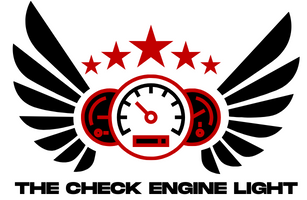

![an pic for Code p0420 Check Engine Light Fully Explained [2024]](https://thecheckenginelight.com/wp-content/uploads/2024/02/Code-p0420-Check-Engine-Light-Fully-Explained-2024-1400x500.jpg)
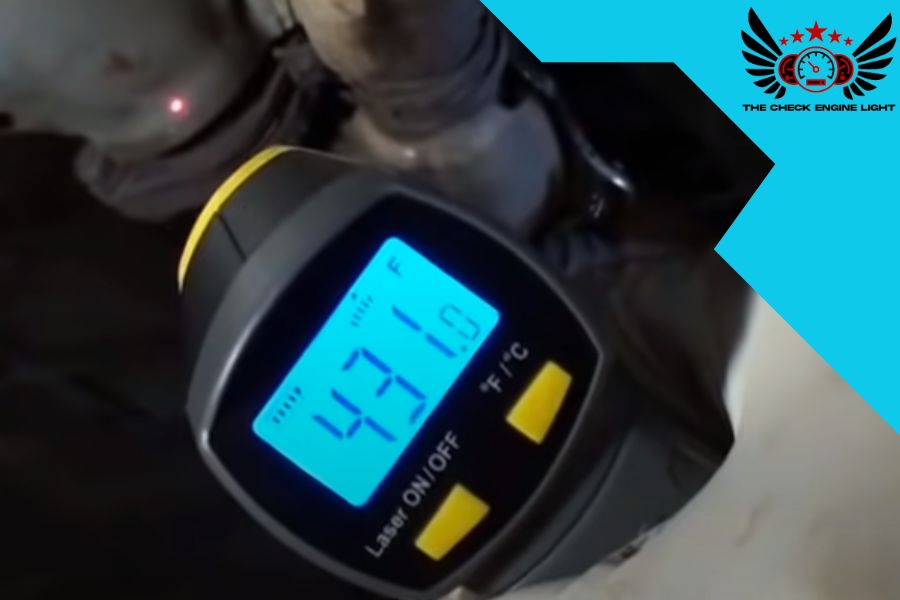
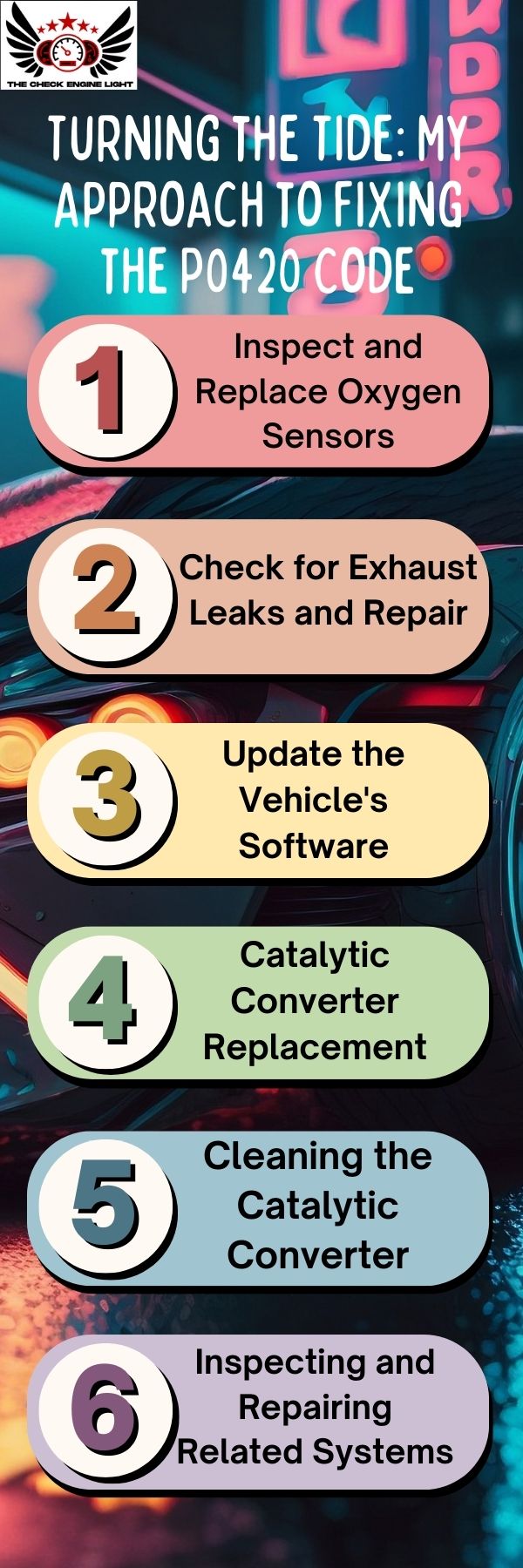
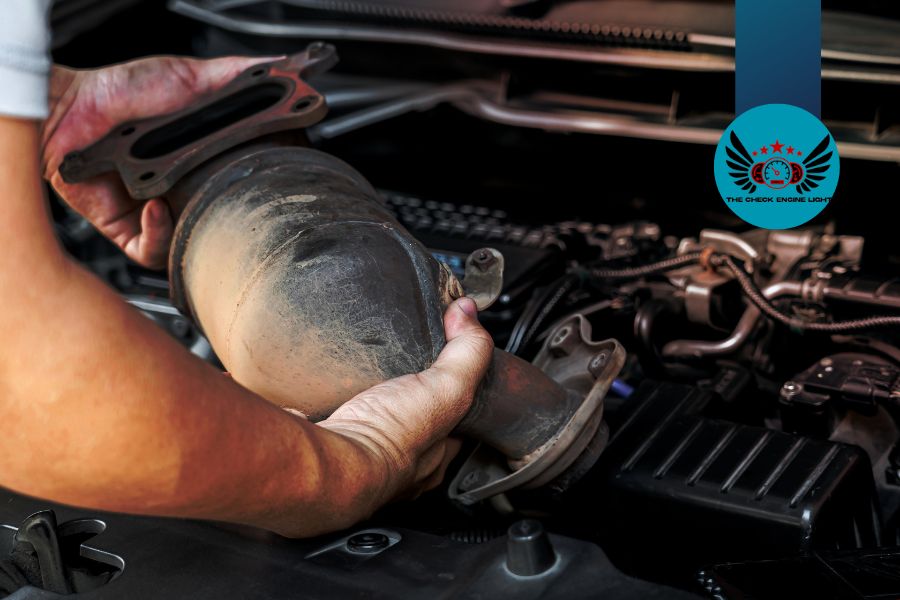

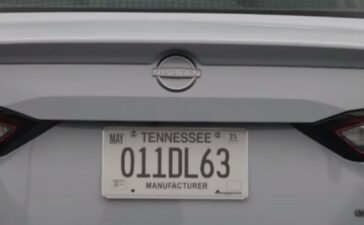

![an featured image about Check Engine Light Jeep Grand Cherokee: 8 Causes + Fixes [2024]](https://thecheckenginelight.com/wp-content/uploads/2024/02/Check-Engine-Light-Jeep-Grand-Cherokee-8-Causes-Fixes-2024-364x225.jpg)